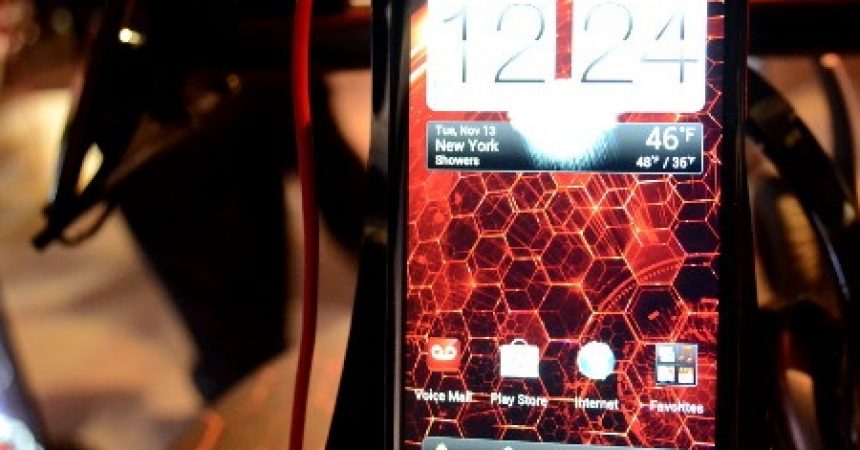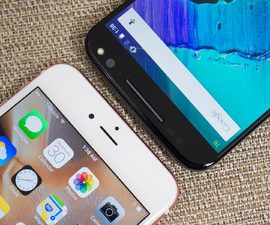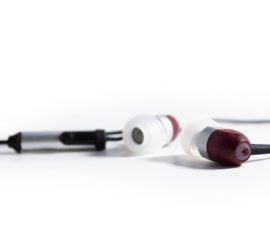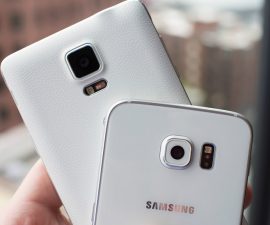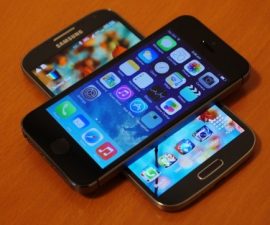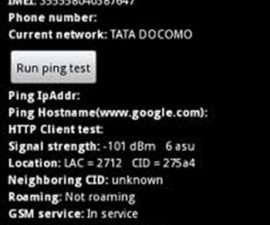HTC Droid DNA
HTC and Verizon will be making the HTC Droid DNA available in the US at around the same time that Samsung will be making their Galaxy Note 2 available as well.
Both of these Android handsets have the same customer base more or less: those who prefer an Android smartphone that has a bigger screen than the usual.
Let’s take a closer look at both devices.

Display
- The Samsung Galaxy Note 2 has a 5.55 inch Super AMOLED display.
- This is the biggest smartphone display currently available in the market.
- The Galaxy Note 2 has a pixel resolution of 1280 x 720 for a pixel density of 265 pixels per inch.
- The images on the Galaxy Note 2 are a little crisper than that found in the Galaxy S3 as it doesn’t use PenTile layout.
- Because of the Super AMOLED technology, the Note 2’s display has great contrast ratios, brightness levels, and viewing angles.
- However, because of the Super AMOLED technology, color reproduction is not that accurate.
- The HTC Droid DNA has a 5 inch Super LCD3 display.
- The HTC Droid DNA display has a pixel resolution of 1920 x 1080 for a pixel density of 440 pixels per inch.
- The quality of the display of the HTC Droid DNA is impressive. The ultra high resolution allows for perfect crispness, great viewing angles, and very accurate color reproduction.
Verdict: The display of the HTC Droid DNA can be considered one of the best ever to be featured on a smartphone

Design and Build Quality
- The Galaxy Note 2 looks a lot like Samsung’s Galaxy S3.
- Under drop tests, the Galaxy Note 2 did prove to be sturdier than the Galaxy S3.
- The Galaxy Note 2’s measurements are 151.1 x 80.5 x 9.4 mm and it weighs around 183 grams.
- The HTC Droid DNA is said to be one of the best-looking handsets ever.
- The Droid DNA has a smaller display than the Note 2 and it also has curved edges. These two features allow for a more compact phone that easily fits in your hands or in your pockets.
- The Droid DNA’s measurements are 143 x 71 x 9.73 mm and it weighs 138 grams.
- The Droid DNA is thinner, shorter, narrower, and also lighter than the Galaxy Note 2.
- Both the Droid DNA and the Galaxy Note 2 feature narrow bezels which allow for them to maximize screen space.
Verdict: The HTC Droid DNA has the better-looking design.

Internal Hardware
- The Samsung Galaxy Note 2 has a 1.6GHz Exynos 4 (A9) quad-core processor as well as a Mali400 MP GPU
- The HTC Droid DNA has a Qualcomm’s Snapdragon S4 Pro which has a 1.5 GHz quad-core Krait processor as well as an Adreno 320 GPU.
- Both the Droid DNA and the Galaxy Note 2 have 2GB RAM for a smooth experience while multitasking.
- The Adreno 320 GPU is much faster than the Mali 400 MPGPU.
- There are 3 variants of the Samsung Galaxy Note 2 available with different amounts of onboard storage: 16, 32, 54 GB.
- The Galaxy Note 2 also has a microSD slot so you can expand your storage by as much as 64 GB.
- The Droid DNA only has the option for 16 GB of onboard storage and does not have a microSD so there is not an option to expand your storage.
- Camera-wise, both the Galaxy Note 2 and the Droid DNA have an 8MP shooter as their primary camera.
- The Note 2 also has a 1.9 MP secondary camera
- The Droid DNA has a 2 MP secondary camera.
- Both these cameras are quite good for basic photo taking.
- The Samsung Galaxy Note 2 has a 3,100 mAh battery
- The HTC Droid DNA has a 2,020 mAh battery.
- The Note 2 has a Wacom digitizer and features Samsung’s S-Pen. Both these features are needed for some unique software functions.
Verdict: The Galaxy Note 2, with its big removable battery and its microSD slot wins here.
Software
- Both the Samsung Galaxy Note 2 and the HTC Droid DNA have Android 4.1 Jelly Bean. Updates for both these phones to Android 4.2 are expected shortly.
- The HTC Droid DNA uses HTC’s Sense user interface.
- The Samsung Galaxy Note 2 uses Samsung’s TouchWiz user interface.
- Samsung has introduced a range of software features with the Galaxy Note 2, including a number of apps to be used with the S-Pen.
Verdict: The Samsung Galaxy Note 2 and its extra software win here.
There are two questions you need to ask yourself when choosing between the Samsung Galaxy Note 2 and the HTC Droid DNA:
1) Do you want really fast internals and a great 5-inch display? Then go for the Droid DNA.
2) Do you want something that feels like a smartphone, improves the Android OS and which you can take notes on? Then go for the Galaxy Note 2.
What’s your answer? The Droid DNA or the Galaxy Note 2 ?
JR
[embedyt] https://www.youtube.com/watch?v=fN51STSN73o[/embedyt]
